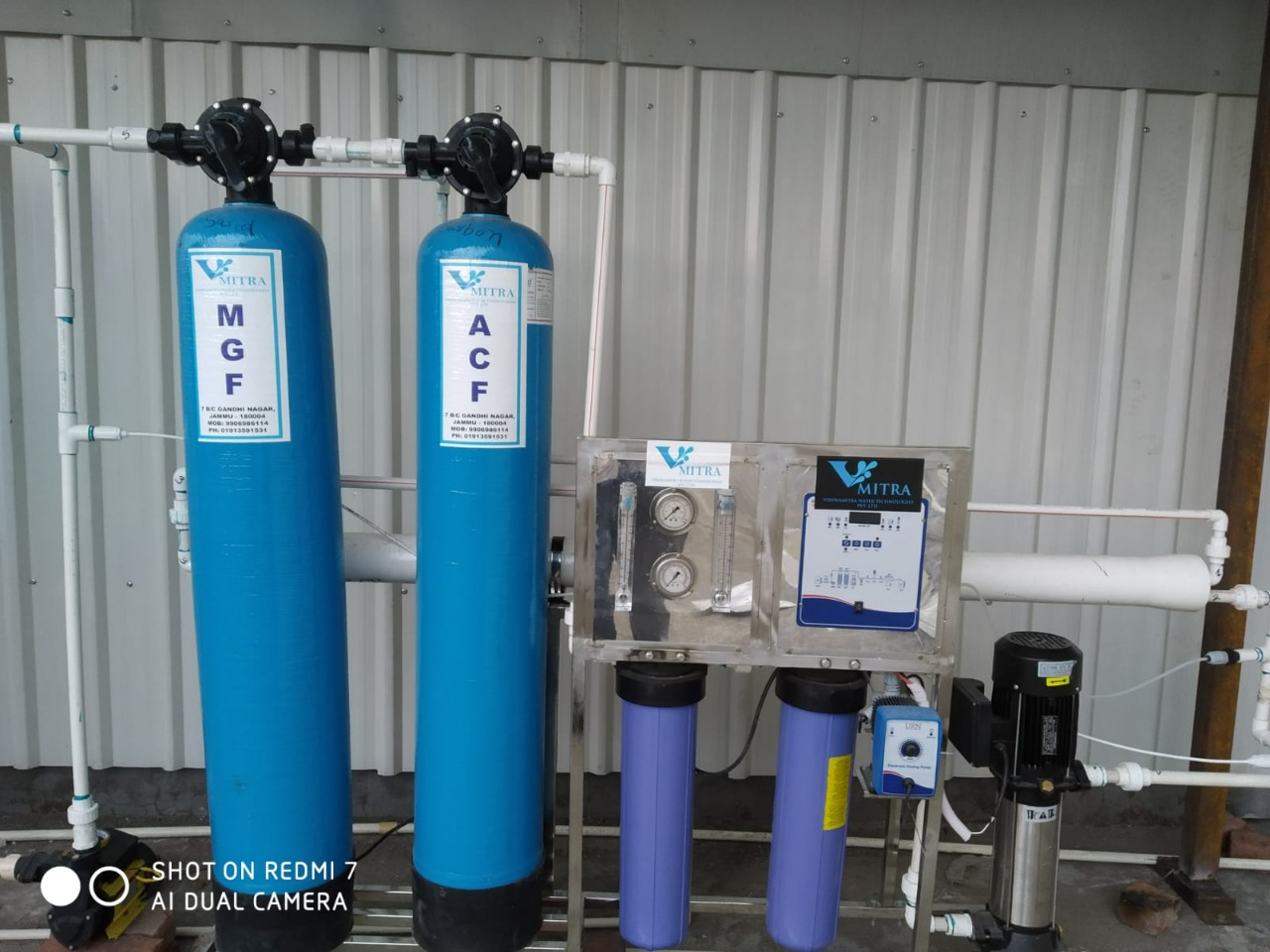
Water Treatment Plants
Demineralization is the process of removing mineral salts from Water by using the ion exchange process.
Demineralised Water is Water completely free ( or almost ) of dissolved minerals as a result of one of the following processes :
- Distillation
- Deionization
- Membrane filtration (reverse osmosis or nanofiltration)
- Electrodyalisis
- Or other technologies.
Demineralized Water also known as Deionized Water, Water that has had its mineral ions removed. Mineral ions such as cations of sodium, calcium, iron, copper, etc and anions such as chloride, sulphate, nitrate, etc are common ions present in Water. Deionization is a physical process which uses specially-manufactured ion exchange resins which provides ion exchange site for the replacement of the mineral salts in Water with Water forming H+ and OH- ions. Because the majority of Water impurities are dissolved salts, deionization produces a high purity Water that is generally similar to distilled Water, and this process is quick and without scale buildup. De-mineralization technology is the proven process for treatment of Water. A DM Water System produces mineral free Water by operating on the principles of ion exchange, Degasification, and polishing. Demineralized Water System finds wide application in the field of steam, power, process, and cooling.
We also Design, Fabricate, Supply, Erect and Commission Sewage Treatment Plants ( STP ) for treating sewage generated by Industry, large colonies, Hotels, Hospitals, IT Parks and commercial buildings.

Principle
Water Treatment Plants
Process
In the context of Water purification, ion-exchange is a rapid and reversible process in which impurity ions present in the Water are replaced by ions released by an ion-exchange resin. The impurity ions are taken up by the resin, which must be periodically regenerated to restore it to the original ionic form. (An ion is an atom or group of atoms with an electric charge. Positively-charged ions are called cations and are usually metals; negatively-charged ions are called anions and are usually non-metals).
The following ions are widely found in raw Waters :
Cations
- Calcium (Ca2+)
- Magnesium (Mg2+)
- Sodium (Na+)
- Potassium (K+)
Anions
- Chloride ( Cl-)
- Bicarbonate (HCO3-)
- Nitrate (NO3-)
- Carbonate (CO32-)
Electrodeionization EDI
Electrodeionization Systems remove ions from aqueous streams, typically in conjunction with reverse osmosis (RO) and other purification devices. Our high-quality deionization modules continually produce ultrapure Water up to 18.2MW/cm. EDI may be run continuously or intermittently
Advantages
- Variety of cost effective standard models.
- Improved aesthetics and rugged design.
- User friendly, low maintenance and easy to install.
- Simpler distribution and collection systems.
- Quick availability.
- Pre dispatch assembly check.
- The multiport valves are top mounted as well as side mounted with the necessary high pressure rating PVC piping.
- Single valve operation as compared to the six valves in conventional filters
- Each operating step is clearly marked on the valve, thereby eliminating chances of error in the operating sequence.
- Single valve assembly, with its simplified frontal Piping, simpler distribution collecting systems is Very easy to install.
- Rust free
- Less power consumption
- Durable
- Economical
- High shelf life

Ion Exchange Resins
There are two basic types of resin – cation-exchange and anion-exchange resins. Cation exchange resins will release Hydrogen (H+) ions or other positively charged ions in exchange for impurity cations present in the Water. Anion exchange resins will release hydroxyl (OH-) ions or other negatively charged ions in exchange for impurity anions present in the Water.
The application of ion-exchange to Water treatment and purification. There are three ways in which ion-exchange technology can be used in Water treatment and purification :
first, cation-exchange resins alone can be employed to soften Water by base exchange; secondly, anion-exchange resins alone can be used for organic scavenging or nitrate removal; and thirdly, combinations of cation-exchange and anion-exchange resins can be used to remove virtually all the ionic impurities present in the feedWater, a process known as deionization. Water deionizers purification process results in Water of exceptionally high quality
Deionization
For many laboratory and industrial applications, high-purity Water which is essentially free from ionic contaminants is required. Water of this quality can be produced by deionization.The two most common types of deionization are :
• Two-bed deionization
• Mixed-bed deionization
Two-bed deionization
The two-bed deionizer consists of two vessels – one containing a cation-exchange resin in the hydrogen (H+) form and the other containing an anion resin in the hydroxyl (OH-) form. Water flows through the cation column, whereupon all the cations are exchanged for hydrogen ions. To keep the Water electrically balanced, for every monovalent cation, e.g. Na+, one hydrogen ion is exchanged and for every divalent cation, e.g. Ca2+, or Mg2+, two hydrogen ions are exchanged. The same principle applies when considering anion-exchange. The decationised Water then flows through the anion column. This time, all the negatively charged ions are exchanged for hydroxide ions which then combine with the hydrogen ions to form Water (H2O).
